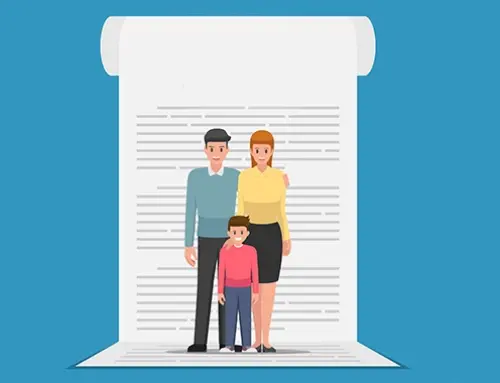Contents
Streamlining your legal work has never been easier with the advent of online signatures! These digital tools not only save time but also add a layer of convenience to your practice. Ready to seal the deal and boost your efficiency? Let’s dive in!
Understanding the Legality of Virtual Signatures
Are Virtual Signatures Legal?
Absolutely! Virtual signatures are not just a tech fad; they’re legally recognized and enforceable in many places around the globe. Think of it this way: just like your handwritten signature on a paper contract, a virtual signature carries the same weight. Thanks to laws and regulations designed to keep up with our digital age, you can sign documents online with confidence.
Legal Framework and Regulations
Navigating the legal landscape of virtual signatures might seem daunting, but it’s simpler than you think. In the United States, the Electronic Signatures in Global and National Commerce Act (E-SIGN) and the Uniform Electronic Transactions Act (UETA) have got you covered. These laws ensure that your e-signatures are just as legit as ink on paper. Across the pond in the European Union, the eIDAS Regulation (Electronic Identification, Authentication and Trust Services) sets the gold standard for electronic signatures. These frameworks are designed to make sure your digital dealings are secure, reliable, and recognized by the law.
Jurisdictions Where Virtual Signatures are Recognized
Virtual signatures are becoming the norm in many parts of the world, including the United States, Canada, the European Union, Australia, and beyond. Each region has its own set of rules, but the common thread is ensuring that electronic signatures are trustworthy and legally binding. It’s a bit like having a universal handshake—understanding the specific requirements of each jurisdiction helps ensure your virtual signatures are rock-solid wherever you go.
| Features | Advantages | Functions |
|---|---|---|
| Identity Verification | Ensures the signer’s identity is authenticated | Verifies the signer’s identity before signing |
| Encryption | Protects documents from tampering | Secures the signed document with encryption |
| Audit Trails | Provides a detailed log of the signing process | Tracks who signed the document and when |
| Tamper-Evident Seal | Detects any changes made after signing | Alerts users if a document is altered post-signature |
| Multi-Factor Authentication | Adds an extra layer of security | Requires additional verification steps |
| Compliance with Legal Standards | Ensures legality and enforceability | Adheres to regulations like E-SIGN, UETA, and eIDAS |
| Document Integrity | Maintains the original content of the document | Guarantees that the document remains unchanged after signing |
| Ease of Use | Simplifies the signing process | Allows users to sign documents from any device and location |
| Integration with Other Tools | Enhances productivity and workflow | Integrates with CRM, document management systems, and other software |
| Remote Accessibility | Enables signing from anywhere | Facilitates remote work and transactions |
Creating a Legal Signature Online
How to Make a Legal Signature
Creating a legal signature online is as easy as pie. Start by choosing a reliable digital signature platform, like DocuSign or Adobe Sign. Upload your document, follow the simple steps to create your signature, and voilà—you’ve got yourself a legal signature. It’s like signing a piece of paper but way cooler and more efficient!
Key Components of a Legally Binding Digital Signature
To ensure your digital signature holds up in court, it needs to tick a few important boxes:
- Identity Verification: The platform must verify who you are. This could be through email, SMS, or even a video call.
- Intent to Sign: There should be clear evidence that you intended to sign the document. Think of it as clicking “I agree” before downloading software—your digital “yes.”
- Document Integrity: The document must be tamper-proof, ensuring no sneaky changes can be made after signing.
- Consent: You need to agree to use an electronic signature. It’s all about making sure you’re on board with going digital.
Tools and Platforms for Creating Legal Signatures
There are plenty of fantastic tools out there to help you create legal signatures. Here are a few of the best:
- DocuSign: Known for its user-friendly interface and rock-solid security features. It’s like the Swiss Army knife of digital signatures.
- Adobe Sign: If you’re already using Adobe products, this one integrates seamlessly. Plus, it’s packed with features.
- HelloSign: A straightforward, no-fuss option that gets the job done without a hitch.
These platforms make the process smooth and straightforward, so you can focus on what you do best—practicing law.
Obtaining a Digital Signature
How to Get a Digital Signature
Getting a digital signature is like setting up an online account—quick and painless. Here’s a simple rundown:
- Choose a Provider: Pick a trusted digital signature provider like DocuSign, Adobe Sign, or HelloSign.
- Register: Sign up and verify your identity. Most platforms will guide you through this process with easy-to-follow steps.
- Create a Signature: Use the platform’s tools to craft your digital signature. You can often draw it, type it, or even upload an image of your handwritten signature.
- Sign Documents: Upload your document, apply your digital signature, and you’re good to go. Easy peasy!
Trusted Digital Signature Providers
Here are some top-notch providers you can trust:
- DocuSign: Known for its ease of use and compliance with legal standards, it’s a favorite among professionals.
- Adobe Sign: Packed with features and integrates seamlessly with other Adobe products, making it a versatile choice.
- HelloSign: User-friendly with robust security measures, it’s perfect for those who want a straightforward solution.
These providers are like your best friends in the digital signature world—they’ve got your back and make everything simpler.
Steps to Acquire and Implement a Digital Signature
Ready to dive in? Here’s how to get and implement a digital signature in no time:
- Research Providers: Look at different digital signature providers and compare their features, security measures, and compliance with legal standards. It’s like shopping for a new gadget—find the one that fits your needs best.
- Register and Verify: Sign up with your chosen provider and go through the identity verification process. This step ensures your digital signature is secure and legally binding.
- Create and Customize: Create your digital signature using the provider’s tools. Customize it to look just the way you want. Think of it as designing your own digital autograph.
- Integrate: Integrate the digital signature solution with your existing systems and workflows. This might mean syncing with your email, document management system, or legal software like RunSensible. Once set up, you’ll be signing documents faster than ever.
Online Witnessing of Signatures
Can You Witness a Signature Online?
Absolutely, you can witness a signature online! It’s just like being there in person but without the hassle of travel. With video conferencing tools, you can watch the signing process unfold live, ensuring everything is above board. It’s perfect for our modern, remote-working world where convenience and efficiency are key.
Legal Requirements for Witnessing Signatures
The legal requirements for witnessing signatures online can vary, but generally, here’s what you need to know:
- Real-Time Observation: The witness must observe the signing process in real-time. This means a live video call, not a recording.
- Identity Verification: The witness must verify the signer’s identity, often through showing ID on the video call.
- Document Integrity: Ensure the document remains unchanged after signing. This typically involves using secure digital signature platforms.
By following these steps, you can make sure the witnessing process is just as valid as if you were in the same room.
Platforms Supporting Online Witnessing
Several platforms make online witnessing a breeze:
- Notarize: Specializes in online notarization and witnessing, offering a seamless experience.
- DocuSign: Includes features for remote witnessing and notarization, making it a versatile choice.
- OneNotary: Provides secure and compliant online witnessing services, perfect for legal documents.
These platforms are like your virtual notary office—ready to help you witness and notarize documents from anywhere.
Validity of PDF Signatures
Is a PDF Signature Valid?
Absolutely! A PDF signature is not only valid but also widely accepted in legal and business environments. Just like signing a paper document, a PDF signature can hold legal weight, provided it meets specific criteria. Think of it as your digital fingerprint—unique, secure, and easy to use. With the right tools, signing a PDF is as binding as putting pen to paper.
Ensuring the Authenticity of PDF Signatures
Ensuring the authenticity of PDF signatures is crucial. Here are some tips to keep your digital signatures secure and trustworthy:
- Use Trusted Software: Always use reputable software like Adobe Acrobat or DocuSign. These platforms employ robust security measures to safeguard your signature.
- Verify Certificates: Ensure the digital certificate used to sign the document is valid and issued by a trusted certificate authority (CA). This step is akin to checking the ID of someone signing a document in person.
- Check Integrity: Verify that the document hasn’t been altered since it was signed. Most PDF signature tools will alert you if any changes have been made after the signature was applied. It’s like having a tamper-evident seal on your document.
By following these steps, you can be confident that your PDF signatures are genuine and legally binding.
Best Practices for Using PDF Signatures
Using PDF signatures effectively requires a few best practices to ensure they are secure and legally sound:
- Use Strong Encryption: Ensure that the platform you use employs strong encryption methods to protect your signature and the document. Encryption acts as a digital lock, keeping unauthorized users from tampering with your documents.
- Keep Records: Maintain detailed records of the signing process, including the digital certificate and audit trail. This documentation can be invaluable if the validity of the signature is ever questioned.
- Comply with Standards: Adhere to the relevant legal standards and best practices for digital signatures in your jurisdiction. For instance, in the United States, following guidelines set by the E-SIGN Act and UETA can help ensure your signatures are recognized and enforceable.
By adopting these practices, you can enhance the reliability and legal standing of your PDF signatures.
Acceptance of Digital Signatures
Can Digital Signatures Be Accepted?
Yes, digital signatures can be accepted, and they are increasingly becoming the norm in various industries. Thanks to advancements in technology and comprehensive legal frameworks, digital signatures are recognized as valid and enforceable. Whether you’re signing a contract, approving a loan, or even filing court documents, digital signatures offer a secure and efficient alternative to traditional ink signatures. Imagine the convenience of signing important documents from anywhere, anytime—it’s a game-changer for legal professionals.
Sectors and Scenarios Accepting Digital Signatures
Digital signatures are embraced across a wide range of sectors and scenarios:
- Legal Sector: Lawyers use digital signatures for contracts, agreements, and court filings. This not only speeds up the process but also ensures a higher level of security and traceability.
- Financial Industry: Banks and financial institutions use digital signatures for loan agreements, investment documents, and account openings. This reduces paperwork and enhances customer satisfaction.
- Healthcare: Hospitals and clinics use digital signatures for patient consent forms, medical records, and insurance claims. This improves efficiency and reduces errors.
- Real Estate: Real estate transactions, including lease agreements and sales contracts, are expedited with digital signatures. This is particularly useful in the fast-paced real estate market.
- Government Services: Government agencies use digital signatures for various services, including tax filings, permits, and licensing. This makes government services more accessible and efficient.
In each of these sectors, digital signatures streamline operations, reduce costs, and improve the overall user experience.
Overcoming Challenges in Digital Signature Acceptance
While digital signatures are widely accepted, some challenges remain. Here’s how to overcome them:
- Educate Stakeholders: One of the biggest hurdles is getting all parties comfortable with digital signatures. Educate clients, partners, and team members about the legality and benefits of using digital signatures. Provide resources and training sessions to help them understand the process and its security measures.
- Ensure Compliance: Compliance with legal standards is crucial. Use digital signature solutions that adhere to regulations like the E-SIGN Act, UETA, and eIDAS. Compliance ensures that your digital signatures are legally binding and universally accepted.
- Address Security Concerns: Security is a top priority. Use platforms that offer robust security features, such as encryption, multi-factor authentication, and audit trails. These features protect against fraud and unauthorized access.
- Integration with Existing Systems: Ensure that your digital signature solution integrates seamlessly with your existing systems, such as document management and CRM software. Integration simplifies the workflow and enhances productivity.
- Technical Support: Choose a provider that offers excellent technical support. Having access to quick and reliable support can help resolve any issues that arise and ensure smooth operation.
By addressing these challenges head-on, you can maximize the benefits of digital signatures and ensure their smooth adoption.
Practical Applications and Future Trends
Practical Applications in Legal Practice
Digital signatures have revolutionized how law firms operate, offering a multitude of practical applications:
- Client Onboarding: Streamline the onboarding process by allowing clients to sign engagement letters and other initial documents electronically. This reduces delays and enhances client satisfaction.
- Contract Management: Simplify the creation, negotiation, and execution of contracts. Digital signatures enable quick revisions and approvals, ensuring contracts are finalized faster.
- Court Filings: Many jurisdictions now accept digital signatures for court documents, making it easier to file motions, briefs, and other legal documents without the need for physical copies.
- Internal Approvals: Speed up internal processes by using digital signatures for approvals on expense reports, HR documents, and inter-office agreements.
- Client Communications: Use digital signatures for client communications, such as signing off on case strategies or approving legal actions. This ensures that you have documented consent and reduces misunderstandings.
By integrating digital signatures into these areas, law firms can improve efficiency, reduce errors, and provide a better client experience.
Case Study of a Successful Implementation
Here is an examples of law firms that have successfully implemented digital signatures:
Global Law Partners
During the COVID-19 pandemic, Global Law Partners switched to digital signatures to continue operations seamlessly. They used HelloSign to manage remote client interactions, maintaining their service quality despite the challenges of remote work.
Future Trends in Digital and Online Signatures
The future of digital and online signatures is bright, with several exciting trends on the horizon:
- Increased Adoption: As more jurisdictions and industries recognize the validity of digital signatures, their adoption will continue to rise. This widespread acceptance will further streamline global business and legal processes.
- Enhanced Security Measures: With advancements in technology, digital signature platforms will incorporate even stronger security measures, such as blockchain technology and advanced encryption methods. These improvements will ensure that digital signatures remain secure and tamper-proof.
- AI Integration: Artificial intelligence will play a significant role in automating and enhancing digital signature processes. AI can help verify identities, detect fraudulent activities, and streamline document management.
- Mobile Signatures: The rise of mobile technology will make it easier to sign documents on the go. Mobile apps for digital signatures will become more sophisticated, offering the same level of security and functionality as desktop versions.
- Smart Contracts: Smart contracts, which automatically execute and enforce the terms of an agreement using blockchain technology, will become more prevalent. These contracts often require digital signatures to initiate, making the process seamless and secure.
- Global Standardization: Efforts to standardize digital signature regulations across different jurisdictions will gain momentum. This will make it easier for international businesses and legal practices to adopt and implement digital signatures.
These trends indicate that digital signatures will become an even more integral part of the legal landscape, offering new opportunities for efficiency and security.
Embrace the Future: Digitize Your Legal Practice
Digital signatures are not just a trend—they are the future of efficient and secure legal practice. By incorporating digital signatures into your workflow, you streamline operations, reduce turnaround times, and enhance client satisfaction. The legal framework supporting digital signatures ensures they are valid and enforceable, giving you peace of mind. From client onboarding to court filings, the applications are vast and the benefits are clear. Now is the perfect time to embrace this technology and modernize your practice.
As the legal industry continues to evolve, staying ahead means adopting tools that drive efficiency and security. Digital signatures offer a seamless way to handle documents, no matter where you or your clients are located. With trusted platforms and a growing acceptance across sectors, the transition to digital signatures has never been easier.
Take the leap today and experience the transformative power of digital signatures in your legal practice. Ready to streamline your legal work? Try out RunSensible’s legal case management software and see the difference for yourself.
FAQs
1. Are digital signatures legally binding?
Yes, digital signatures are legally binding in many jurisdictions worldwide, including the United States and the European Union. Laws such as the Electronic Signatures in Global and National Commerce Act (E-SIGN) and the eIDAS Regulation in the EU provide a legal framework that ensures digital signatures are recognized and enforceable, just like traditional handwritten signatures.
2. How secure are digital signatures?
Digital signatures are highly secure when used with reputable platforms like DocuSign, Adobe Sign, or HelloSign. These platforms use strong encryption methods to protect the integrity of the signed documents. Additionally, they offer features like identity verification, multi-factor authentication, and audit trails to ensure the authenticity and security of your digital signature.
3. Can digital signatures be used for court filings?
Yes, many jurisdictions accept digital signatures for court filings. This includes various legal documents such as motions, briefs, and agreements. However, it’s important to check the specific requirements of the jurisdiction where you are filing to ensure compliance. Digital signatures can streamline the court filing process, making it more efficient and reducing the need for physical paperwork.
Disclaimer: The content provided on this blog is for informational purposes only and does not constitute legal, financial, or professional advice.







